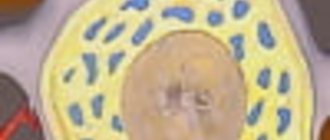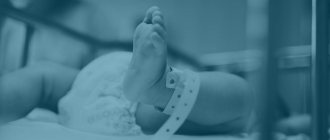Causes of dysphagia
To move food from the oropharynx to the stomach, the muscular structure of the esophagus must be in constant tone. But there are reasons that disrupt this natural process. One of the causes of dysphagia is the inability of the muscles and nerves that move food through the esophagus to perform their functions. Factors that provoke this condition are the following: head or spinal injury; suffered a stroke; some diseases, for example, achalasia (a chronic disease of the neuromuscular apparatus of the esophagus), Parkinson's disease, muscular dystrophy, multiple sclerosis, post-polio syndrome; diseases of the immune system that cause inflammatory or tumor processes; dermatomyositis (muscle disease), polymyositis; spasm of the esophagus; scleroderma, which causes stiffness in the tissues of the esophagus. One of the common causes of dysphagia is a blockage of the esophagus. It can occur under the influence of many factors.
- Gastroesophageal reflux. Some people develop weakness of the cardia of the stomach. In this case, gastric juice along with the contents of the stomach is thrown into the esophagus. An ulcer of the esophagus is formed, which then scars, which contributes to the narrowing of the esophagus and disruption of its elasticity.
- Dissection of esophageal tissue. This pathology can be congenital or acquired.
- Esophagitis. This is an inflammation of the mucous membrane of the esophagus, which is caused by infectious diseases, allergic reactions of the body, irritation due to a tablet stuck in the esophagus.
- Esophageal diverticulum. This cause of dysphagia means bulging of the esophagus. May be congenital or acquired. 5. Benign or malignant tumors of the esophagus.
- Tumors compressing the esophagus from the internal organs, for example, a bone spur on a vertebra, lymph nodes.
- Age-related aging of the body. It is the most common cause of esophageal dysphagia in older adults. With age, all human muscles lose tone, including the muscles of the esophagus.
Diagnosis of dysphagia
To make an accurate diagnosis, it is necessary to undergo a series of clinical examinations. Pathology cannot be detected by visual inspection and palpation. To determine the type of disease and severity, the doctor collects complete information - when the pathology occurred, what symptoms are present, whether there are any chronic diseases, etc. After this, the specialist carefully examines the patient and then prescribes:
- General and biochemical blood test to detect inflammatory processes. FGDS (fibrogastroduodenoscopy) for a detailed study of the mucous membranes of the gastrointestinal tract;
- Fecal analysis (coprogram), which allows to identify the remains of undigested food fibers and determine the level of functioning of the gastrointestinal tract;
- Laryngoscopy - instrumental examination of the larynx and vocal cords;
- The examination is carried out for all patients who have complaints of disorders of the ENT organs;
- Ultrasound (ultrasound examination) - examination of the pancreas, biliary tract and other abdominal organs. This is necessary in order to identify or exclude structural changes leading to the formation of dysphagia;
- Irrigoscopy is an X-ray examination of the esophagus with the introduction of a special contrast liquid. The diagnostic method helps determine the degree of narrowing of the esophagus;
- MRI (magnetic resonance imaging) is a study of the brain for the presence of pathologies that may influence the development of dysphagia. It is prescribed if no mechanical obstacles to the passage of food were identified during previous activities.
Diagnostic measures are very important, since the correctness of further treatment and its effectiveness depend on the accuracy of the diagnosis. To eliminate the possibility of an incorrect diagnosis and incorrect prescription of therapeutic measures, you can contact highly qualified specialists at the 24-hour Yusupov Hospital. Many years of experience allows us to accurately determine the type of pathology and eliminate it in the shortest possible time.
Symptoms of the disease
Symptoms of esophageal dysphagia indicate problems with the movement of food through the esophagus into the stomach. Moreover, the act of swallowing itself does not cause any pain. But after the patient feels a lump, there is a feeling of fullness in the back of the sternum. Typically, symptoms of dysphagia do not include severe pain. Pain is possible only in the case of diffuse spasm of the esophagus. The main symptoms of dysphagia can be identified: impaired movement of food into the esophagus at the level of the oropharynx, which is accompanied by the reflux of a lump into the oral or nasal cavity; feeling of suffocation; coughing; excessive salivation; aspiration pneumonia (inflammation of lung tissue that appears in them when a foreign agent penetrates); inability to swallow food or the need to make great efforts to swallow a bolus of food. Most often, symptoms of esophageal dysphagia are caused by eating solid foods, especially at the onset of the disease. Washing down food with water makes the swallowing process much easier. Ingestion of liquid food is usually easier, although in some types of the disease signs of dysphagia accompany even swallowing water. If you think that you have dysphagia and the symptoms characteristic of this disease, then you should seek advice from a gastroenterologist or neurologist.
Diagnosis and treatment of dysphagia
In diagnosing dysphagia, it is very important to determine the cause that led to the development of this disease. First of all, gastroenterological examination is used, in particular, fibrogastroduodenoscopy (FGDS). FGDS is an endoscopic research method that makes it possible to see the mucous tissue of the upper part of the gastrointestinal tract. In this case, a specialist can examine the resulting pathology. In the case when, when diagnosing dysphagia, the doctor discovers an ulcer or tumor, a biopsy is taken, followed by histological analysis. If symptoms of esophagitis are present, bacteriological culture of the contents of the esophagus is done to identify the causative agent of the disease. In cases where it is determined that the cause of dysphagia is not pathology of the gastrointestinal tract, the patient is referred for a neurological examination. Treatment of dysphagia is carried out simultaneously with treatment of the underlying disease. In many cases, emergency care is required for acute manifestations of the disease. For example, when throwing a lump of food into the nasal cavity, you must first clear the person’s airways of food that has entered them. After this, dysphagia is treated in an inpatient setting. In severe cases of the disease, food and water are introduced into the esophagus using a tube. Treatment of dysphagia, which is caused by esophagitis (inflammation of the esophagus), is carried out using antacid aluminum-containing drugs. Such drugs that reduce stomach acidity include Almagel, Phosphalugel, Zantac and other drugs. A person with dysphagia must follow a special diet and eating habits. Food should be taken in small portions, fractionally. Dry and hasty meals are prohibited. Food should not be hard or dry. You can go to bed no earlier than two hours after eating. The diet used in the treatment of dysphagia should contain food that is easy to digest. It excludes hot, spicy, smoked, fried, fatty foods, coffee, strong tea, and fizzy drinks. Preference is given to a dairy-vegetable diet.
Dysphagia / World Gastroenterology Organization (WGO). Practical guide. 2004.
Dysphagia
OMGE Practical Guide
January 2004: final version
Authors of the review
- JR Malagelada
- F. Bazzoli
- A. Elewaut
- M. Fried
- JH Krabshuis
- G. Lindferg
- P. Malfertheiner
- G. Sharma
- N. Vakil
1. Definition
Dysphagia is defined as difficulty in a person at the beginning of swallowing (usually defined as oropharyngeal dysphagia), or as a feeling that there is an obstruction in the passage of food or liquid from the mouth to the stomach (usually defined as esophageal dysphagia).
Dysphagia is thus the sensation of an obstruction to the normal passage of ingested food.
2. Introduction and main points
Swallowing is a process that is regulated by the swallowing center located in the medulla oblongata, and in the middle and distal part of the esophagus by a powerful autonomic peristaltic reflex, which is coordinated by the enteric nervous system located in the wall of the esophagus. The figure below shows the physiological mechanisms involved in the different phases of swallowing.
Phases of swallowing stages
| Oral phase |
| Oropharyngeal phase |
| Esophageal phase |
A conclusion about the localization of dysphagia should be made based on the patient’s complaints; the lesion will be located either in the place indicated by the patient’s sensations, or below the specified location.
It is equally important to find out after taking what food (solid, liquid or both) dysphagia occurs, whether it is constant or intermittent. Determining the duration of symptoms is also important.
Although they can often occur together, it is important to rule out odynophagia (painful swallowing). Finally, differential diagnosis based on the identification and analysis of symptoms should exclude the presence of Globus hystericus (sensation of a lump in the throat), chest compression, difficulty breathing and phagophobia (fear of swallowing).
Key points to consider in the medical history:
- Localization
- Nature of food and/or liquid
- Persistence or intermittency of symptoms
- Duration of symptoms
Supporting points: is dysphagia oropharyngeal or esophageal? This conclusion can be made with confidence on the basis of a very thorough examination, which makes it possible to accurately assess the type of dysphagia (oropharyngeal dysphagia compared to esophageal dysphagia occurs in 80 - 85% of cases).
2.1 Oropharyngeal dysphagia - main manifestations
Oropharyngeal dysphagia may also be called "high" dysphagia if it involves the oral cavity or pharynx.
Patients have difficulty at the beginning of swallowing and they usually point to the cervical region as the location of this difficulty.
The following accompanying symptoms:
- Difficulty starting to swallow
- Nasal regurgitation
- Cough
- Nasal speech
- Weakened cough reflex
- Choking attack
- Dysarthria or diplopia (may accompany neurological disorders that cause oropharyngeal dysphagia)
- Halitosis may occur in patients with large Zenker's diverticulum containing residual food debris, as well as in patients with progressive achalasia or long-term obstruction of the lumen, leading to the accumulation of decomposing food.
An accurate diagnosis can be established after the neurological disorders accompanying oropharyngeal dysphagia are identified, these may be:
- Hemiparesis resulting from stroke
- Ptosis of the eyelids
- Signs of myasthenia gravis in pregnant women (weakness towards the end of the day)
- Parkinson's disease
- Other neurological diseases, including cervical dystonia, cervical hyperostosis, Arnold-Chiari malformation (caudal displacement of the brain and entrapment in the foramen magnum)
- Identifying a specific decrease in the number of brain nerves involved in the regulation of swallowing may also help to accurately determine the cause of oropharyngeal disorders at diagnosis.
2.2 Esophageal dysphagia - main manifestations
Esophageal dysphagia may be called "lower" dysphagia because it is predominantly located in the distal esophagus, although it should be noted that some patients with esophageal dysphagia such as achalasia may complain of difficulty swallowing in the cervical esophagus, which mimics oropharyngeal dysphagia. .
- Dysphagia, which occurs equally after ingestion of solid and liquid foods, often raises suspicion for the presence of esophageal movement disorders. This suspicion is heightened in cases where intermittent dysphagia when eating both solid and liquid foods is accompanied by chest pain.
- Dysphagia, which occurs only with solids and never with liquids, suggests the possibility of mechanical obstruction with luminal stenosis <15 mm. If the disease progresses, the possibility of developing peptic stricture or carcinoma must be taken into account. It should be borne in mind that patients with peptic stricture have long-term heartburn, but never lose weight. In contrast, patients with esophageal cancer are older people with significant weight loss.
Physical examination of patients with esophageal dysphagia is usually of limited value, although cervical/supraclavicular lymphadenopathy may be identified in patients with esophageal cancer. In addition, some patients with scleroderma and secondary peptic strictures may have CREST syndrome (calcinosis, Raynaud's disease, impaired esophageal motility, sclerodactyly, the presence of telangiectasia).
Bad breath may suggest the presence of achalasia or long-standing obstruction with the accumulation of slowly decomposing food debris in the lumen of the esophagus.
3. Disease severity and epidemiology
Dysphagia is common. For example, cases of dysphagia during emergency medical care can reach a high figure of 33%, and analysis of data on home care shows that 30 - 40% of patients have swallowing disorders, which lead to a large number of aspiration complications.
On the other hand, epidemiological data cannot provide a global view because the number of underlying diseases that can cause dysphagia varies significantly between Western Europe, North America, South Asia, and the Middle East and Africa. In addition, the incidence of disease varies greatly depending on the age of the patients. It should also be remembered that the spectrum of disorders in dysphagia in children differs from that in older people. Thus, only approximation is possible on a global scale. Dysphagia typically occurs at any age, but the prevalence increases with age.
In young patients, dysphagia often accompanies head and neck diseases, as well as cancer of the throat and oral cavity. The incidence of tumors varies among countries. For example, while adenocarcinoma is the predominant type of esophageal cancer in the United States, squamous cell carcinoma predominates in India and China. Likewise, corrosive esophageal stricture (in individuals who have taken corrosive agents for suicidal purposes) and tuberculosis may also be important causes of dysphagia in non-Western countries.
4. Causes of dysphagia
In order to establish the etiology of dysphagia, it is useful to follow the classification that is intended to evaluate symptoms, i.e. a classification that allows us to identify differences between diseases that most often affect the pharynx and proximal esophagus (oropharyngeal or “upper” dysphagia) and diseases that most often affect the body of the esophagus and the esophagogastric junction (esophageal or “lower” dysphagia). However, it should be kept in mind that many disorders overlap and can be the cause of both oropharyngeal and esophageal dysphagia. A thorough medical history, including evaluation of treatment, is important because medications may be involved in the pathogenesis of dysphagia.
4.1 Oropharyngeal dysphagia
In young patients, oropharyngeal dysphagia most often occurs due to inflammatory muscle diseases, the presence of membranes and ring-shaped formations. In older people, this type of dysphagia is most often caused by central nervous system disorders, including stroke, Parkinson's disease and dementia. Typically, a distinction must be made between mechanical problems and neuromuscular contractility disorders, as outlined below.
4.1.1. Mechanical and obstructive causes
- Infections (including retroperitoneal abscesses)
- Thyromegaly
- Lymphadenopathy
- Zenker's diverticulum (if a small diverticulum is present, the cause may be dysfunction of the upper esophageal sphincter)
- Decreased muscle extensibility (myositis, fibrosis)
- Malignant lesions of the head and neck
- Cervical osteophytes (rare)
- Oropharyngeal malignancy and neoplasms (rare)
4.1.2. Neuromuscular disorders
- Central nervous system diseases such as stroke
- Contractile disorders such as cricopharyngeal spasm (upper esophageal sphincter dysfunction) or myasthenia gravis of pregnancy, oculopharyngeal muscular dystrophy, etc.
Post-stroke dysphagia is detected in almost 50% of cases. The severity of dysphagia correlates closely with the severity of stroke. 50% of patients with Parkinson's disease exhibit a number of symptoms consistent with oropharyngeal dysphagia, and in almost 95% of the disorders are detected during video esophagography. Clinically significant dysphagia can be detected in the early stages of Parkinson's disease, but much more often in the later stages.
4.1.3. Other reasons
- Incorrect position of teeth
- Mouth ulcers
- Xerostomia
- Long-term use of penicillamine
4.2. Esophageal dysphagia
The most common causes of dysphagia are three types:
- Damage to the mucosa, which leads to narrowing of the lumen due to inflammation, fibrosis or tumor growth
- Diseases of the mediastinum that lead to obstruction of the esophagus by direct invasion or by enlarged lymph nodes
- Neuromuscular diseases affecting the smooth muscles of the esophagus and its innervation, disrupting peristalsis or the function of the lower esophageal sphincter, or both.
Table 1. Most common causes of esophageal dysphagia
| Foreign bodies in the lumen of the esophagus (usually cause acute dysphagia) |
Damage to the mucosa
|
Mediastinal diseases
|
Diseases affecting smooth muscle and its innervation
|
5. Clinical diagnosis
5.1 Introduction
An accurate examination that takes into account all key diagnostic elements is very important and often allows the diagnosis to be made with complete certainty. It is very important to accurately determine the location where the patient experiences difficulty swallowing (oropharyngeal or esophageal dysphagia).
5.2 Diagnosis and treatment measures for oropharyngeal dysphagia.
The timed water swallow test is an inexpensive and potentially useful screening test that complements history and clinical examination.
The test involves the patient drinking 150 ml of water from a glass as quickly as possible, while the examiner records the time and number of sips. From these data, the rate of swallowing and the average swallow volume can be calculated. This test is reported to have a predictive accuracy for identifying dysphagia of >95%. This test can be supplemented with a “food test” using a small piece of pudding placed on the back of the tongue (6).
While the water swallow test can be used to establish the diagnosis of dysphagia, it is not useful for detecting aspiration in the 20–40% of cases that follow fluoroscopy because the cough reflex is absent. More specific and reliable tests for assessing dysphagia should be those that depend on the characteristics of the patient and the severity of his/her complaints. In this regard, it should be noted that fluoroscopic examination of the swallowing process (also known as “modified contrast radiological examination”) is the gold standard in the diagnosis of oroesophageal dysphagia, and nasoendoscopy is the gold standard for assessing the morphological causes of dysphagia (7,8,9). Fluoroscopic examination can be used for television broadcast over the Internet, facilitating interpretation of the examination in remote locations (10). Fluoroscopy may also help prevent the risk of aspiration pneumonia (11).
The algorithm below provides guidance for more complex tests and procedures necessary to perform diagnostic studies necessary to select specific therapy.
Algorithm 1. Evaluation and treatment of oroesophageal dysphagia
5.3 Diagnosis and treatment of esophageal dysphagia
5.3.1. Medical history should be considered first
The main task in the case of esophageal dysphagia is to exclude a malignant process. The history of the disease may provide clues in this regard; malignancy may be suspected if:
- Disease duration is short (< 4 months)
- The disease progresses
- Dysphagia is more pronounced when eating solid rather than liquid foods
- There is weight loss
Achalasia is more likely if:
- Dysphagia occurs after eating both solid and liquid foods
- The problem has existed for many years
- No weight loss
There is some controversy regarding the choice of diagnostic tests, which concerns the choice of the primary method of examination - either endoscopy or barium swallow.
5.3.2. Barium - contrast esophagogram (barium swallow)
A barium esophagogram—performed in the right lateral decubitus position—can reveal irregularities in the lumen of the esophagus and identify areas of obstruction, tissue lesions, and rings. Barium studies of the oropharynx and esophagus during swallowing are the most appropriate initial tests; it may be useful in detecting achalasia and diffuse esophageal spasm, although this pathology can be more accurately diagnosed using manometry. Such a study can be carried out using a barium tablet, which can detect even minor strictures. Esophageal barium swallow testing may also be useful in patients with dysphagia when endoscopy is negative.
5.3.3. Endoscopic examination
Endoscopy is performed using a fiberoptic endoscope passed through the mouth into the stomach with detailed visualization of the upper gastrointestinal tract. The process of inserting an endoscope into the gastric cavity is very important to exclude pseudoachalasia associated with a tumor of the esophagogastric junction.
Below is the decision-making algorithm.
5.3.3. Other diagnostic tests
- Esophageal manometry
This diagnostic method is less accessible than contrast/barium X-ray and endoscopy, but may be useful in selected cases. The method is based on measuring pressure in the lumen of the esophagus using solid or hydraulic measuring equipment. Manometry is indicated for use in cases where it is assumed that the cause of esophageal dysphagia cannot be identified either by X-ray examination or by endoscopy, and adequate antireflux therapy has been carried out (with cure of esophagitis, which is detected by endoscopy).
The three main causes of dysphagia that can be identified using manometry are: achalasia, scleroderma (ineffective esophageal peristalsis) and esophageal spasm.
- Radionuclide scintigraphy of the esophagus.
The patient swallows a liquid containing a radioactive tracer (for example, water mixed with Technetium 99 and colloidal sulfur) and then the radioactivity of the esophagus is measured. In patients with impaired contractility of the esophagus, a slow release of the radioactive tracer from the esophagus is typical. This technique was originally used for research purposes, but is now beginning to be used for clinical purposes in some specialized institutes.
6. Choice of treatment
6.1. Oropharyngeal dysphagia
There are several treatments for oropharyngeal dysphagia because the neurological and neuromuscular disorders that cause dysphagia can rarely be treated with medications or surgery. Notable exceptions are treatments for Parkinson's disease and myasthenia gravis. Techniques for treating complications are very important. In this regard, identifying the risk of aspiration is a key element in choosing a treatment modality.
Nutrition and diet
Changing your diet to soft foods and choosing a specific posture when eating them is helpful. Oral feeding is superior to other methods of obtaining food if possible. Changing the consistency of food to a thick liquid and eating soft foods will make a significant difference (12). Attention must be paid to food control and nutritional needs (risk of dehydration). Adding citric acid to food improves swallowing reflexes, possibly through improved taste and acid stimulation (13). Adjunctive administration of an angiotensin converting factor inhibitor to relieve the cough reflex may also be beneficial (14).
When there is a high risk of aspiration or when oral intake does not provide adequate nutrition, alternative methods of nutritional support should be considered. A soft feeding tube with sufficient internal diameter can be passed down under x-ray guidance. Feeding gastrostomy after stroke reduces mortality and improves nutritional status compared with the orogastric feeding method. Percutaneous endoscopic gastrostomy allows a gastrostomy tube to be inserted into the stomach through a percutaneous entrance into the abdominal cavity under the supervision of an endoscopist and, if possible, is preferable to surgical gastrostomy. The likelihood that the feeding tube will ever be removed is very low in elderly patients, those suffering from bilateral stroke, or in whom aspiration has occurred on initial fluoroscopic examination (15).
Surgical treatments are aimed at relieving spastic cases of dysphagia, and cricopharyngeal myotomy can be successful in up to 60% of cases, but its effectiveness remains controversial (16). On the other hand, removal of a mechanical obstruction, such as a large, compressing Zenker's diverticulum, often helps.
Swallowing retraining
Various swallowing therapy techniques are being developed to alleviate impaired swallowing. It includes: strengthening exercises, biofeedback stimulation, thermal and gustatory stimulation.
6.2. Esophageal dysphagia
Table 2 below provides a list of treatment options for esophageal dysphagia that may be considered.
Table 2.
| State | Conservative treatment | Invasive |
| Diffuse spasm of the esophagus | Nitrates, calcium channel blockers | Serial dilatation or longitudinal myotomy |
| Achalasia | Soft foods, anticholinergics, calcium channel blockers | Dilatation, botulinum toxin injection, Heller myotomy |
| Scleroderma | Antireflux drugs, systemic drug therapy for scleroderma | Absent |
| GERD | Antireflux drugs (proton pump inhibitors) | Fundoplication |
| Infectious esophagitis | Antibiotics (nystatin, acyclovir) | Absent |
| Pharyngoesophageal (Zenker's) diverticulum | Absent | Endoscopic or external (traditional) repair after crico-pharyngeal myotomy |
| Shatsky's ring | Soft food | Dilatation |
6.2.1. Peptic stricture
Peptic stricture usually results from gastroesophageal reflux disease (GERD) and can be caused by certain medications.
In differential diagnosis it is necessary to exclude:
- caustic stricture after ingestion of a corrosive substance
- drug-induced stricture
- postoperative stricture
- fungal stricture
After confirmatory endoscopy, dilatation is the method of choice; its technique is given below.
Esophageal strictures should be dilated in a vigorous manner using Savary bougies or balloons. The choice of the type of dilator should be based on the experience of its use in a given institute and the experience of the operator, as well as the convenience of its use, since the literature does not make it possible to identify the advantage of one type of dilator over another.
If dilatation is performed using bougies, the diameter of the first bougie should be approximately equal to the identified diameter of the stricture. The diameter of the inserted bougies is increased until the insertion resistance reaches the value at the first insertion, after which two more subsequent bougies can be additionally inserted during one procedure. If a balloon dilator is used, the initial dilation should be limited to a diameter of no more than 45F. The degree of initial dilatation of the stricture does not seem to influence either recurrence or the need for repeat dilatation, so the concept of aggressive dilatation to prevent recurrence is weakly supported. The degree of dilatation in each patient should be based on the patient's reactions to the treatment and the difficulties that arise during dilatation. Experience has shown that most patients achieve good dysphagia relief at a diameter between 40F and 45F. Strictures generally should not dilate beyond 60F in diameter.
Vigorous antireflux therapy using proton pump inhibitors or fundoplication improves dysphagia and reduces the need for subsequent esophageal dilatation in patients with peptic esophageal strictures. In patients with persistent dysphagia or in cases of disease relapse after dilatation and antireflux therapy for the first time, cure of reflux esophagitis must be endoscopically confirmed before repeated dilatation. If a positive treatment effect is obtained, the need for subsequent dilatation is decided empirically. Those patients who experienced only short-term relief after dilatation can be taught the self-bouging technique. In the presence of refractory strictures, an attempt to inject hormones into the strictures may be considered. In rare cases, in the presence of true refractory strictures, resection of the esophagus and its reconstruction are required. In exceptional cases, in the presence of benign strictures, endoluminal replacement may be recommended (17). The risk of perforation is about 0.5%. In cases of obvious perforation, surgical treatment is usually indicated.
Below is an algorithm for choosing a treatment method.
Drug therapy with nitrates or calcium channel blockers is often ineffective or poorly tolerated. Botulinum toxin injections may be used as initial therapy in patients at low risk for surgery when it is suspected that drug therapy or bougienage will be poorly tolerated. Botulinum toxin injections are a safe procedure that can induce a state of remission for at least 6 months in approximately 2/3 of patients with achalasia. However, most patients will require repeated injections to maintain remission and only 2/3 of patients with remission at 6 months will remain in remission for up to 1 year despite repeated toxin injections. In cases where this type of treatment fails, the physician and patient must decide whether the benefits of pneumatic dilatation or myotomy outweigh the risks in elderly or debilitated patients. A feeding gastrostomy tube is a safe alternative to pneumatic dilatation and myotomy, but many neurologically intact patients find life with a gastrostomy tube unacceptable.
7. References
- Dysphagia - ABC of the upper gastrointestinal tract. William Owen BMJ 2001;323:850-853 Pubmed-Medline
- A Technical Review on Treatment of Patients with Dysphagia caused by benign disorders of the distal esophagus Gastroenterology. July 1999; 117(1): 233-54. Pubmed-Medline
- Oesophageal motility disorders Joel E Richter The Lancet; 8 September 2001; 358/9284;823-828. Pubmed-Medline
- Current concepts expandable metal stents for the treatment of cancerous obstruction of the gastrointestinal tract Baron Todd H New England Journal of Medicine; 2001 May 31; 344 (22);1681-1687 Pubmed-Medline
- Plummer-Vinson syndrome Atmatzidis-K, Papaziogas-B, Pavlidis-T, Mirelis-Ch, Papaziogas-T. Diseases of the Esophagus 2003, 16/2 (154-157) Pubmed-Medline
- Dysphagia in patients with nasopharyngeal cancer after radiation therapy: A videofluoroscopic swallowing study. Chang-YC, Chen-SY, Lui-LT, Wang-TG, Wang-TC, Hsiao-TY, Li-YW, Lien-IN. DYSPHAGIA, 2003, Vol/Iss/Pg. 18/2 (135-143). Pubmed-Medline
- Morphological findings in dynamic swallowing studies of symptomatic patients. Scharitzer-M, Pokieser-P, Schober-E, Schima-W, Eisenhuber-E, Stadler-A, Memarsadeghi-M, Partik-B, Lechner-G, Ekberg-OM Scharitzer European Radiology EUR-RADIOL, 01 MAY 2002, 12/5 1139-1144). Pubmed-Medline
- Visualization of swallowing using real-time true FISP MR fluoroscopy. Barkhausen-J, Goyen-M, von-Winterfeld-F, Lauenstein-T, Debatin-JF European Radiology 01 JAN 2002, 12/1 (129-133). Pubmed-Medline
- Early assessments of dysphagia and aspiration risk in acute stroke patients. Ramsey-DJC, Smithard-DG, Kalra-L. Stroke 01 MAY 2003, 34/5 (1252-1257). Pubmed-Medline
- Real-time remote telefluoroscopic assessment of patients with dysphagia. Perlman-AL, Witthawaskul-W. Dysphagia 2002, 17/2 (162-167). Pubmed-Medline
- Videofluoroscopic studies of swallowing dysfunction and the relative risk of pneumonia. Pikus-L, Levine-MS, Yang-YX, Rubesin-SE, Katzka-DA, Laufer-I, Gefter-W American Journal of Roentgenology 01 JUN 2003, 180/6 (1613-1616). Pubmed-Medline
- Tolerance of early diet textures as indicators of recovery from dysphagia after stroke. Wilkinson-TJ, Thomas-K, MacGregor-S, Tillard-G, Wyles-C, Sainsbury-R. Dysphagia, 2002, 17/3 (227-232). Pubmed-Medline
- Effect of citric acid and citric acid-sucrose mixtures on swallowing in neurogenic oropharyngeal dysphagia. Pelletier-CA, Lawless-HT. Dysphagia 2003, 18/4 (231-241). Pubmed-Medline
- Aspiration pneumonia and dysphagia in the elderly. Marik-PE, Kaplan-D. Chest 01 JUL 2003, 124/1 (328-336). Pubmed-Medline
- Predictors of Feeding Gastrostomy Tube Removal in Stroke Patients With Dysphagia. Ickenstein-GW, Kelly-PJ, Furie-KL, Ambrosi-D, Rallis-N, Goldstein-R, Horick-N, Stein-J. Journal of Stroke and Cerebrovascular Diseases 2003, 12/4 (169-174).
- Quality of life following surgical treatment of oculopharyngeal syndrome. Gervais-M, Dorion-D. Journal of Otolaryngology 2003, 32/1(1-5). Pubmed-Medline
- Relapsing cardial stenosis after laparoscopic Nissen treated by esophageal stenting. Pouderoux-P, Verdier-E, Courtial-P, Bapin-C, Deixonne-B, Balmes-JL. Dysphagia 2003, 18/3 (218-222) Pubmed-Medline
8. Useful websites
- Medical Position Statement on the Management of Oropharyngeal Dysphagia; Gastroenterology 1999; 116; 452-478 Link
- Diagnosis and Management of Achalasia. Practice Guideline. The American Journal of Gastroenterology; 1999; 94/12;3406-3412. Link
- ACR Appropriateness Criteria for imaging recommendations for patients with dysphagia - Radiology 2000 June; 215 (suppl) 225-230. Link
- Management of patients with stroke; III Identification and management of Dysphagia; SIGN Guideline No. 20; pilot edition november 1997; Link
- Diagnosis and treatment of swallowing disorders (dysphagia) in acute care stroke patients. (ACHPR-99-E023. Rockville: AHCPR, 1999). Link
- M. Louay Omran, Dysphagia. Link
- Clinical Use of esophageal manometry; AGA Medical Position statement; reviewed 2001. Link
- Practice guidelines for preoperative fasting and the use of pharmacologic agents to reduce the risk of pulmonary aspiration. American Society of Anesthesiologists Anesthesiology 1999 Mar;90(3):896-905. Link
9. Reader comments and feedback
Invitation to Comments
The committee that wrote this guide welcomes comments and suggestions from readers. If you think that some aspects of the problem are not sufficiently covered, if you have good experience in solving these problems, then share it with the authors of the manual. Together we can make it even better!
Treatment of dysphagia in Moscow
Treatment for dysphagia in Moscow is not difficult to find, but when choosing a clinic, it is important to take into account the experience of specialists in this area, since the prognosis directly depends on this. For many years, the Yusupov Hospital has been specializing in pathologies associated with the esophagus and difficulty swallowing.
The clinic is equipped with the latest equipment, offers comfortable conditions, as well as the most favorable atmosphere for patients. The cost of treatment depends on the complexity of the disease and methods of therapeutic measures. Despite the high level of professionalism of specialists and expensive equipment, the Yusupov Hospital offers its patients the most competitive prices in Moscow.
In addition to treating dysphagia of any degree, the clinic offers the following services:
- Treatment of pathologies of a neuralgic nature - stroke, dementia, epilepsy, parkinsonism, myasthenia gravis and other complex diseases.
- Help for patients with cancer - chemotherapy, immunotherapy, rehabilitation, as well as effective pain-relieving procedures.
- Services of highly specialized specialists - cardiologist, pulmonologist, urologist, gastroenterologist, rheumatologist and others.
- Diagnostic examination using the latest devices from leading global manufacturers.
Treatment of dysphagia
Therapy is prescribed after diagnostic measures have been carried out. Depending on the type of pathology, treatment can be medication or surgical interventions.
Medications
- If the cause of the pathology is increased acidity of the gastric juice, medications are prescribed that reduce its levels - Almagel, Phosphalugel, Zantac.
- In case of pathology caused by bacterial infections, antibiotics are prescribed, the group of which is determined by the doctor. This could be Ceftriaxone, Levobax, Levoximed.
In addition, anti-inflammatory drugs and medications that eliminate the present symptoms - antiemetics, painkillers and other pharmacological groups - can be prescribed.
Operation
Surgery is used if there is no therapeutic effect from drug therapy. Most often, manipulations are performed for dysphagia caused by cancerous tumors, chemical burns of the esophagus, or severe inflammatory lesions. After surgery, the patient requires bed rest in a hospital setting.
Diet therapy
Diet therapy is also important for dysphagia. It involves eating frequent meals in small portions. During the rehabilitation period it is necessary to exclude:
- Alcohol products;
- Fatty, fried, spicy foods;
- Fast food products;
- Smoked meats, saltiness, spices and herbs.
While eating, food must be chewed thoroughly, avoiding swallowing large pieces.
The disease is quite dangerous and requires a competent approach from a certified specialist. In this case, it is important to choose the right doctor, because the final result and prognosis depend on this. With incorrect manipulations, there is a risk of developing aggravating consequences and the pathology becoming severe.
By turning to the Yusupov Hospital, the patient provides himself with safe and effective treatment without complications, which is guaranteed to lead to quick relief from severe pathology. In addition, in the clinic you can undergo a rehabilitation course under the close supervision of a doctor and prevent the recurrence of dysphagia.
Medicines are taken only in consultation with a doctor. Self-medication in all cases aggravates the situation and leads to dangerous complications.
Causes
For the reasons of dysphagia, two groups of this disorder are distinguished: psychogenic (neurogenic) and somatic. Psychogenic is caused by a malfunction of the brain. Somatic - disease of internal organs, mechanical external pressure or damage to the pharynx and esophagus.
Somatic dysphagia is caused by the following reasons:
- Inflammatory diseases of the oral cavity, pharynx, esophagus and surrounding tissues.
- Neoplasms of the pharynx , esophagus and surrounding organs (tumors, cysts).
- Esophageal injuries . Hiatal hernia.
- Severe allergies . Quincke's edema.
Psychogenic (neurogenic) dysphagia is more common. Her reasons:
- Depression, anxiety disorders, neuroses with somatoform symptoms.
- Consequences of organic brain damage with the development of encephalopathy.
- Schizophrenia and schizophrenia spectrum disorders. Delusional disorders.
- Consequences of strokes.
- Complication as a result of taking antipsychotics. Parkinson's syndrome.
- Alcohol intoxication, intoxication with psychoactive substances.
The swallowing disorder may be complete: no food can be accepted. Quickly leads to weight loss and dehydration. It is an indication for intensive treatment.
Incomplete swallowing disorder is manifested by the fact that, for example, some types of food can pass through the esophagus into the stomach. For example, liquid food, or only in bulk form.









